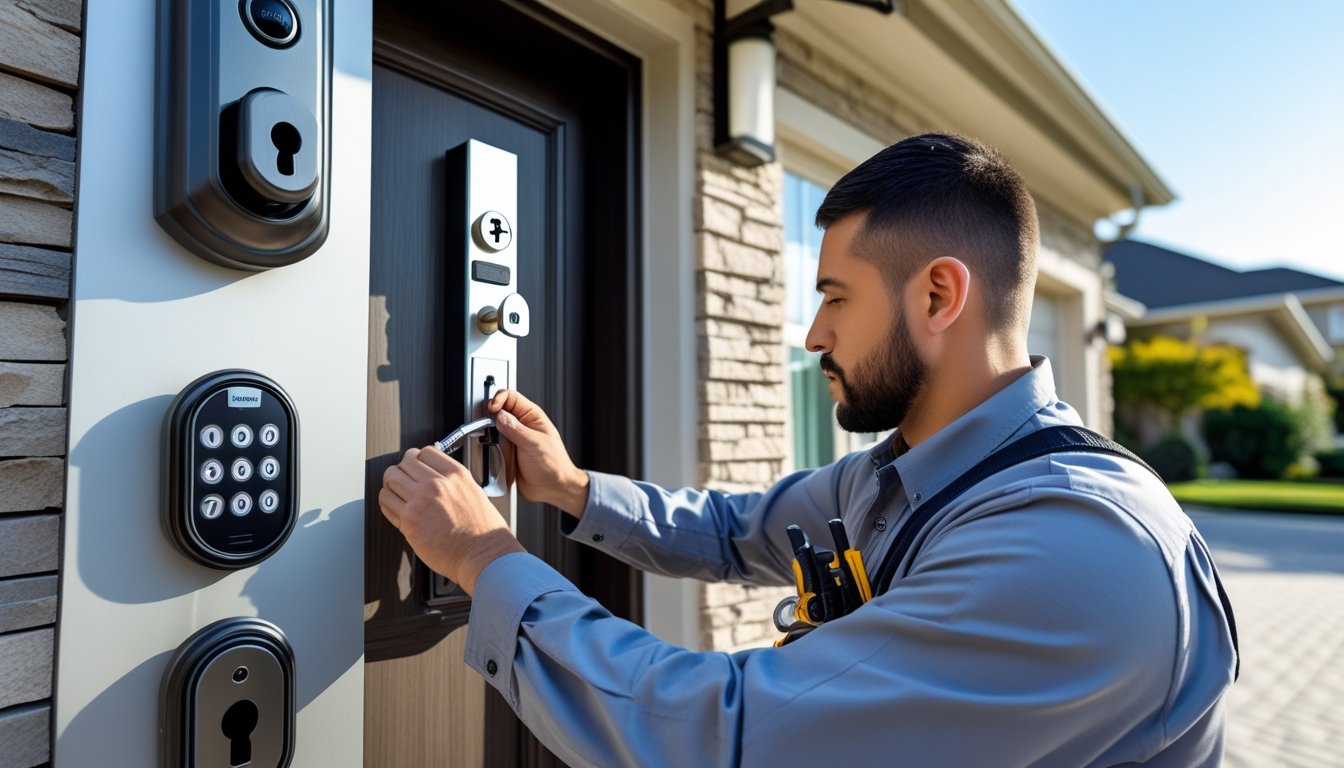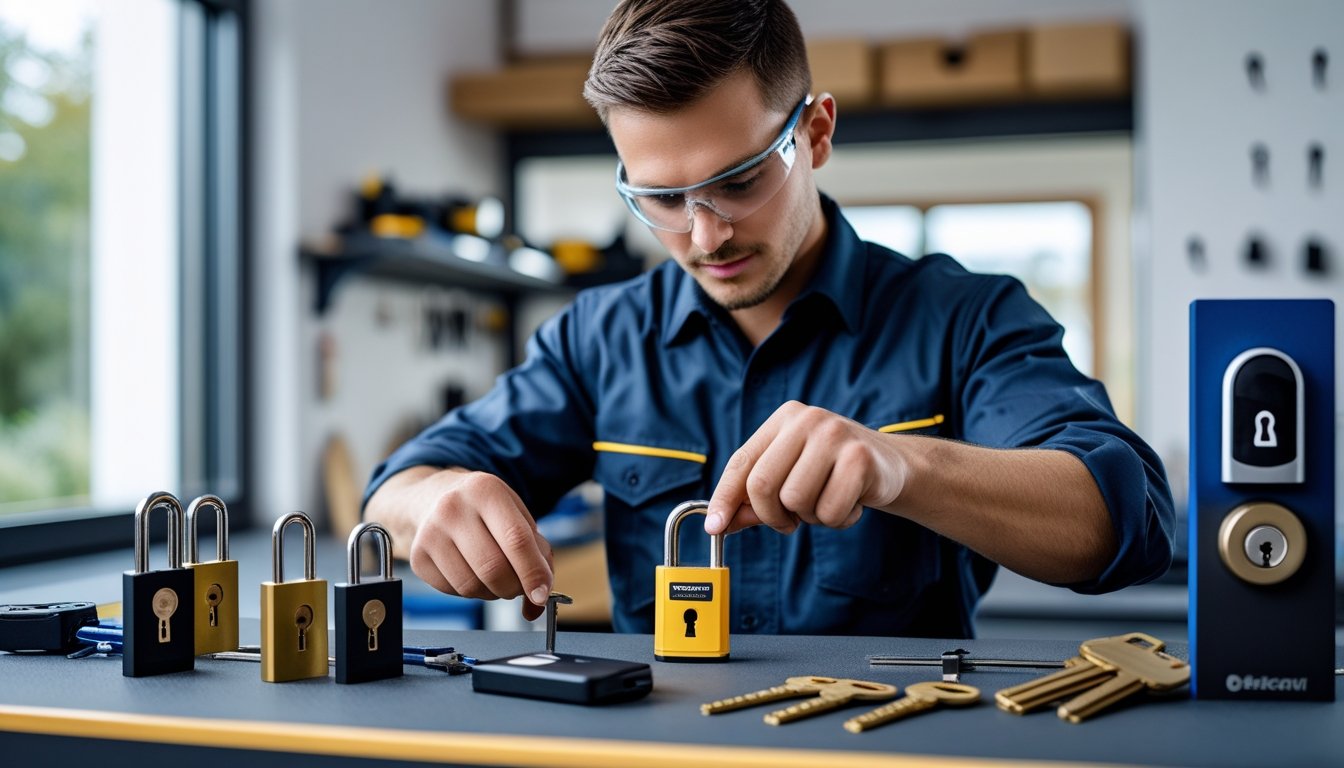Late updated: 08 Aug 2025 13:08
Written by: Elena Prescott
Locksmithing Techniques For Enhanced Home Security: Expert Tips For Safeguarding Your Home
In an ever-evolving world, safeguarding our homes has never been more vital. As we explore the latest locksmithing techniques, it becomes clear that both traditional and advanced methods have their place in enhancing security. Implementing a mixture of high-security locks, smart systems, and expert locksmith services significantly boosts home safety. Whether you're interested in cutting-edge electronic locks or prefer a classic, tried-and-true mechanism, there's a solution tailored to each need.

Our homes are our sanctuaries, and protecting them involves understanding the various approaches available through locksmithing expertise. From biometric systems to keyless entry technologies, modern locksmiths offer a comprehensive range of services to meet diverse security needs. As we dive deeper, we’ll explore how these techniques can transform your home’s defences, providing peace of mind to every member of your household.
We recognise that the nuances of locksmithing can be complex, which is why clarity is essential. Our goal is to demystify these services, empowering you to make informed decisions. Join us as we uncover how locksmithing can provide robust solutions for home security enhancement.
Key Takeaways
- Advanced locksmithing integrates traditional and modern security solutions.
- High-security locks and smart systems enhance home defences.
- Expert locksmith services provide tailored security solutions.
Essential Locksmithing Techniques for Enhanced Home Security
To fortify home security, it's vital to use advanced locksmithing techniques. By selecting the right deadbolts, embracing smart technology, combating common break-in techniques, and reinforcing physical barriers, we can significantly increase residential safety.
Choosing and Upgrading Deadbolt Locks
Deadbolt locks are a foundational security measure for any home. Choosing the right one involves understanding the differences between single-cylinder and double-cylinder deadbolts. Single-cylinder deadbolts require a key on the outside and a thumb turn on the inside, whereas double-cylinder deadbolts need keys from both sides, providing extra security but less convenience in emergencies.
Upgrading existing deadbolts entails selecting models with hardened steel bolts to withstand physical attacks. Look for locks that adhere to the ANSI Grade 1 standard, which offers the highest level of residential security.
Regular maintenance is crucial, including lubricating the lock with graphite powder or a silicon-based spray. This ensures smooth operation and extends the lifespan of the lock. Ensuring the strike plate is correctly anchored with long screws also enhances security by making it harder to force the door open.
Smart Locks and Keyless Entry Systems
Smart locks have revolutionised home security by offering convenience and control. These systems allow us to lock and unlock doors remotely via smartphone apps. This feature is especially useful for granting temporary access to visitors without sharing physical keys.
There are various smart lock technologies, including Wi-Fi, Bluetooth, and Z-Wave, each offering different benefits. Wi-Fi systems allow control from anywhere with internet access, while Bluetooth and Z-Wave work well for local control and integration with home automation systems.
Security protocols such as two-factor authentication and auto-lock features add layers of security, ensuring our peace of mind. Some smart locks also have built-in alarms that activate during forced entry attempts. Regular updates to firmware are essential to safeguard against vulnerabilities and cyber threats.
Preventing Lock Bumping and Picking
Lock bumping and picking are prevalent tactics used by intruders. Implementing measures against these techniques is essential for residential security. Anti-bump locks use special pins that resist the bumping action, making them a valuable investment.
For additional protection, high-security locks equipped with complex keyways require specialised tools to pick, deterring unauthorised access. Pin-tumbler locks with mushroom or spool pins can further resist picking attempts.
Utilising secondary locks, such as door chains or bars, adds a physical barrier. Encouraging security education among household members to spot signs of tampering plays a crucial role in enhancing home security awareness and preparedness.
Strengthening Door and Window Security
Securing doors and windows is integral to comprehensive home security. For doors, using solid core materials, such as wood or steel, offers resilience against forced entry. Adding a door reinforcer around the lock aligns with increasing overall strength.
For windows, installing reinforced glass or security film helps deter break-ins. Window locks or bars can also provide additional layers of security, especially on ground-level windows that are easily accessible.
Regular inspections to ensure proper sealing and locking mechanism functionality are paramount. Implementing these strategies creates a holistic defensive barrier that safeguards the residential perimeter against potential threats.
Integrating Advanced Security Solutions

As we explore integrating advanced security solutions, we focus on three main areas: implementing robust alarm systems, embracing remote monitoring through home automation, and adapting security upgrades for both emergency and commercial settings.
Alarm System Installation and Maintenance
Alarm systems form the backbone of modern home security. Installing these systems involves carefully planning where each component is placed for optimal coverage. We need to consider door and window sensors, motion detectors, and glass break sensors. Once installed, regular maintenance is crucial to ensure everything functions correctly. This includes checking batteries, testing sensors, and updating software that may control integrated systems. A properly maintained system deters intruders and provides residents with peace of mind.
Remote Monitoring and Home Automation
Remote monitoring connects the modern home to our fingertips. With advancements in technology, we can now control lights, locks, and cameras using smart devices. This capability allows us to respond swiftly to security alerts, even when miles away. Integrating home automation systems not only improves convenience but enhances security by enabling timed lighting to deter burglars and automating lock mechanisms. This combination of automation and remote access ensures a level of awareness and control previously unavailable.
Security Upgrades for Emergency and Commercial Needs
Homes and businesses face unique security challenges that require tailored solutions. For emergencies, having instant access to emergency contacts and monitoring services is vital. Commercial properties, with higher traffic and valuable assets, benefit from advanced access control systems and high-definition surveillance. Investing in these specialised upgrades helps in managing threats effectively. Contacting professionals for consultation and customised solutions is advised to ensure all requirements are met.
Frequently Asked Questions

Lock upgrades, anti-snap locks, and smart locks all contribute to bolstering domestic security. Adhering to British Standards for locks and following best maintenance practices ensure long-term effectiveness. Modern locksmithing offers innovative solutions to further enhance home protection.
What are the most effective lock upgrades to improve home security?
Improving home security often involves upgrading to high-security locks, such as deadbolts with hardened steel bolts or keyless entry systems. These upgrades are designed to frustrate potential intruders and provide peace of mind to homeowners.
How can anti-snap locks prevent burglary attempts?
Anti-snap locks are engineered to withstand snapping, a common method used by burglars. These locks incorporate special mechanisms that protect the central locking unit by allowing it to be broken only in a controlled manner, thus preventing entry.
What are the advantages of installing smart locks in a domestic setting?
Smart locks offer convenience through keyless entry and remote access. They can integrate with home automation systems, allowing owners to monitor and control access through smartphones. Enhanced features such as activity logs and temporary codes add to their appeal.
Can you explain the importance of having locks that meet British Standard BS3621?
Locks that meet British Standard BS3621 are recognised for their reliability and security. These locks are subject to rigorous testing and offer resistance against picking, drilling, and other forced entry techniques, making them a trusted choice for homeowners and insurers.
What practices should be followed for maintaining locks to ensure optimal security?
Regular maintenance of locks includes lubricating them with graphite or silicone-based sprays and ensuring all components are aligned. Checking for wear and tear and replacing old or damaged locks promptly are critical practices for optimal security.
Are there any innovative locksmithing methods that homeowners should consider for enhanced protection?
Homeowners should explore options like biometric locks that use fingerprint recognition and electronic keypads. These advanced systems offer increased security by eliminating the risk of lost or stolen keys, while integrating seamlessly into modern smart home setups.
